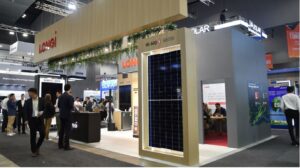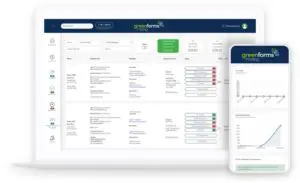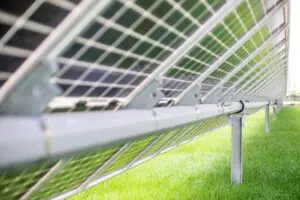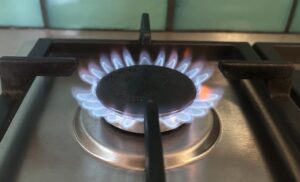Press Release
The Australian solar market continues to grow and is becoming increasingly important throughout the region driving consistent GW deployment year on year. It is also characterised by innovation and many new technical concepts get their first sight of the sun in Australia.
LONGi is the market leading producer of mono PERC modules with production capacity of 75GW of wafers and 30GW of module by the end of 2020.
Operating in all key global markets and with a dedicated subsidiary in Australia, LONGi is able to offer a unique perspective on the way the solar market has developed in 2020 and what is expected in the future.
Mr Luke Lu, Vice President of LONGi Solar global, shares his insight into the future of solar in Australia and APAC.
What drives the Australian market and what do you expect from it in 2021?
The Australian market, in 2020, is driven by the rooftop residential sector and C&I projects, which is different from what we see in other countries around the world.
On rooftops we see more systems being designed to maximise the number of panels and panel technology selection being driven by higher efficiency and greater power output for the same roof space.
Large scale ground mount system developers are specifying bifacial panels on tracking systems with 8 out of 10 modules that we ship to Australia for these projects being bifacial in 2020. We expect this trend to accelerate in 2021.
More and more global developers are now operating in Australia. This means that key technologies are coming to market faster in Australia because of the scale of operations here.
LONGi, by supports many customers like Sterling and Wilson who have been operating at scale in India and who are now using our panels in their Australian projects.
How has the solar market performed in the APAC region so far in 2020?
The COVID-19 pandemic definitely has had a negative business impact on the entire PV industry and LONGi is no exception. In APAC, we faced solar project cancellations or delays. But we ensured close co-operation with customers and partners to seek every possible way to execute per plans.
We have full confidence that APAC will recover from the impact of COVID-19, supported by the measures taken by governments across India, Japan, Australia and other countries. We believe that in 2021, the region will fully recover and come back stronger than before.
Although some specific projects are being affected, we have seen significant increases in demand from India, Southeast Asia, Japan, Australia and South Korea.
What are the biggest risks and challenges faced by the global solar industry?
The industry has seen significant impact from COVID-19. In addition, the price fluctuations of raw materials used in the production of solar modules like silicon, glass, etc. has created challenges. Yet another issue faced by manufacturers this year has been the shortage of glass and other materials which has impacted all players globally.
To better support our customers, we have optimised our SCM system to ensure a stable supply stream from our suppliers. This stable supply stream is the most important factor as many of our customers’ projects are bound by firm deadlines.
When we faced difficulties, we keep inform our customers early and keep close communications to find solutions to minimize any negative impact.
How do you see the market for floating solar and solar-wind hybrids in Australia?
Australia, along with the rest of APAC will see rapid growth in floating solar and solar-wind hybrids. As it becomes difficult to find and acquire land for solar projects, especially in countries which do not have large or affordable land available, developing floating solar projects on lakes, dams and rivers, becomes a good solution.
Solar-wind-storage hybrids will also see strong growth in the future. Evolution of the grid in Australia and the requirement for more stable solar power is creating opportunity for the solar plus storage market to make a large contribution.
In your opinion, what has been the biggest solar PV technology trend of 2020? How do you foresee the PV landscape evolving over the next 2-3 years? What is the cost and efficiency outlook?
The most significant breakthrough in 2020 is the move towards a standard 182mm (M10) wafer format for mono PERC.
Working with our industry partners and many other module manufacturers this means better efficiencies in the supply chain and more integrated and standardised future development cycles. For customers this is a big win across the solar market as the sector matures.
We are proud to be one of the first manufacturers to launch this new wafer standard in Australia through our Hi-MO 5 module which uses M10 gallium doped monocrystalline wafers and smart soldering technology.
As the world’s leading supplier of monocrystalline wafers we have a unique ability to influence the entire solar market in wafer and cell development. We invest heavily in our R+D to make sure that products will continue to evolve to meet the market and in 2020 we are speaking with leading utility scale and rooftop installers to provide input into our next generation of products specifically for Australia.
For example, earlier this year we brought the first 370 wp rooftop module to market (Hi-MO 4) which is in the sweetspot for rooftop installers, 1.7m long and less than 20kg in weight.
In the next 2-3 years, we expect bifacial panels with large area wafers to become the mainstream product for the global utility market. While in the residential and C+I space we anticipate greater customer collaboration to create specific products tailored for the Australian market.
We are also assessing various emerging advanced technologies in terms of cost vs value for commercialization.
What is the company’s target and outlook for 2021?
LONGi has full confidence in contributing towards a greener world in 2021. We are optimistic for solar development over the next few years. With 2020 global module shipments projected at 20GW, we are on track to deliver on our shipment target and will be the leading solar module supplier at the close of the year.
We have put in place the resources and infrastructure to more than double our module supply in 2021.
To ensure that this target is met, LONGi continues to invest in manufacturing capacities, SCM optimization and continuous technological innovation so that our products and solutions continue to provide the best value for our customers.
Mr. Luke Lu bio: Luke Lu is LONGi Solar’s Vice President APAC. He joined the integrated monocrystalline PV manufacturer in 2019 to drive the company’s solar module business in the APAC region which includes India, Japan, Korea, Mongolia, South East Asia, Australia, New Zealand, the Pacific Islands as well as Central Asian countries like Kazakhstan. APAC is a high growth region and presents huge opportunities for solar power project development.











